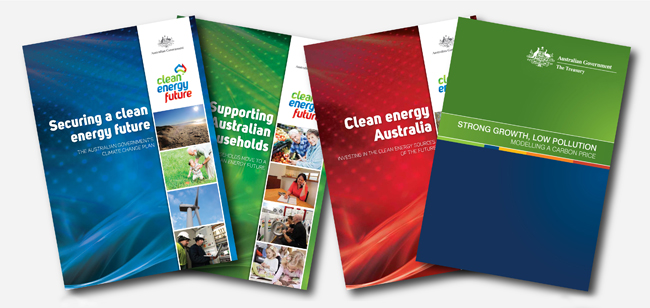The carbon pricing regime will be the start of a long road toward a much-needed paradigm shift for Australia [26 July 2011 | Peter Boyer]

The Gillard government’s carbon pricing package, for all its flaws, is an important first step towards a sustainable future.
Should the Gillard government’s “Clean Energy Future” scheme become law in coming months, one of the things it will be remembered for is the process that brought it about: a rare combined effort by government and non-government MPs.
Tasmanian Senator Christine Milne, the Greens climate spokesperson and the best-informed Australian politician on the physical consequences of climate change, was a pivotal figure in that process, alongside Climate Change Minister Greg Combet.
But as Milne told a 300-strong Hobart audience last week, the struggle to win hearts and minds in support of the pricing package’s big raft of reforming measures is just beginning.
From where she sits (and I completely agree), no-one should reject the reforms out of hand without first considering what they’re for: to bring Australia into a global effort to lessen the risk of dangerous human-induced climate change by curbing our carbon emissions.
Many opponents of a carbon tax seem to put financial returns ahead of the physical consequences of failure to cut emissions, so Julia Gillard and her government have hedged their bets by highlighting the economic consequences of inaction. They’ve also included sweeteners in the package: free permits for disadvantaged industries and over-compensation for people on lower incomes.
Selling this major economic reform is a tough call. The government is asking us to discard mindsets that have underpinned our economic and social lives for the best part of a century. We’ve recently had to shed our United States fixation as China turns out to be our chief economic support; now we’re being asked to shed many more as we prepare to do things differently.
The plan is that around 500 of Australia’s biggest polluters will be required to buy a permit for every tonne of carbon pollution they produce, at an initial fixed price of $23 a tonne. The permit price will rise by 2.5 per cent in real terms in each of the following two years.
With the switch to cap-and-trade in July 2015, an upper limit, represented by the number of available permits, will be put on total emissions. The carbon price will be set by businesses competing for an increasingly restricted supply of permits. Businesses that can’t economically reduce their pollution will need to pay higher prices; others will find it cheaper to cut emissions.
Nothing this complex is ever quite as it seems. The government’s long-term target of an 80 per cent cut in emissions by 2050 is impressive (though Europe got there first), but Treasury’s modelling shows that half of the cuts won’t happen in Australia but as a result of paying polluters in other countries to cut their emissions.
International credits will help soften the hard landing for emissions-intensive businesses. Our current emissions trajectory shows that even the five per cent 2020 reduction target is a tall order.
For its part, the government sees such credits as integral to future globalised trading and a way of helping developing countries develop sustainable practices. But if we’re serious about the bottom line — actual, physical cuts to Australian emissions — the way they are utilised will have to be monitored very carefully.
Both overseas offsets and taxpayer-funded subsidies to soften the blow for people and businesses are barriers to people changing their behaviour. This is politics at work, neither pretty nor visionary.
For all that, and for all the negative publicity leading up to it, the package put together by the government and its supporters in this endeavour, the Greens and two independent MPs, Tony Windsor and Rob Oakeshott, has the makings of an integrated and compelling vision for a sustainable Australia.
Establishing a Clean Energy Finance Corporation (supporting cleaner technologies) and a national energy-saving scheme, closing high-polluting electricity generators and supporting mitigation efforts by local councils and communities are all badly needed and very welcome initiatives.
The role of the land in mitigating emissions is a big topic which I’ll return to in future weeks, but the key message is that while farming and other land-based activities won’t be covered by the pricing scheme, the Carbon Farming Initiative aims to fill the void for farmers by giving all land managers a way of earning income from their efforts to reduce emissions.
Our natural ecosystems — both carbon stores and human life-support systems — will be early casualties in a warming environment. The Biodiversity Fund will tackle this vulnerability with a six-year, $946 million grant program to help landholders protect and increase their land’s natural diversity.
The story of our response to the climate emergency has been one of abandoned ideals. John Howard’s enthusiasm at the Kyoto Protocol waned to the point of rejecting the agreement in 2002, and eight years later Kevin Rudd’s declaration about great moral challenges was reduced to meek surrender.
The carbon pricing scheme, at least, represents some sort of stand in response to ever-stronger evidence that this country will suffer with the rest of the world if we can’t reduce the billions of tonnes of carbon that we send into the atmosphere each year.
Is it enough? No. If the world did no more than follow this example, the resulting carbon dioxide level would guarantee an unstable climate for many generations. But it’s a good start, and it’s heading us — at last — in the right direction.
